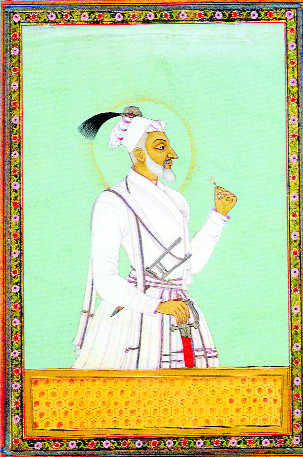Aradhika Sharma
It’s always the lives of the darker historical figures that make for the most fascinating stories. The twists and turns of a mind driven by motivations that are seemingly malevolent, causing fear and hatred for generations to come, are all the more enthralling to read about.
Aurangzeb, the last of the great Mughal emperors was probably the most complex characters in all of Indian history. He was a soldier, ruler, zealot, administrator, but also the man who killed his brothers and imprisoned his father and sister to get the throne. He was also the sworn enemy of Shivaji, who was unswayed in the Deccan as a great hero. His intermingling of religion and politics were the driving force of his rule and policies as well as the root cause of his unpopularity and fear.
The paradoxical emperor had so many facets that made it hard to pin him down. He was the single-biggest ruler in India, had no vices, upheld his religion and was neither a work-shirker nor faint hearted in anyway — even lead his army at the age of 82. His discipline was legendry. Yet, when history speaks of him, it is with trepidation and not admiration.
The book was originally written in Marathi by one of India’s best novelists, NS Inamdar and excellently translated by Vikrant Pande. While Inamdar’s work is possibly the most open-minded narrative on the badshah, Pande’s translation maintains the flow of narrative and the work gives us an opportunity to revise our judgment on Aurangzeb the man and the emperor and draw our own conclusions, while also making us aware of the motivations behind the king’s actions and extreme policies towards other religions. At the least, the reader may wonder if the man who ruled Hindustan for 50 years was more sinned against than sinning.
Aurangzeb’s life can be clearly divided into three parts. The first 40 years of his 89-year-old life were spent as a prince. The following 23 years were the time of reigning from Delhi. The last 26 years were the years of jehad against the Maratha and spent in fighting in Central and South India. The call of jehad against the Marathas (and Hindus) was, in fact, Aurangzeb’s undoing — a decision that fragmented the great empire. The irony was that the very zeal of that made the shahenshah an outstanding expansionist and was the reason of the fall of the Mughal empire.
The author tries to put the life of Aurangzeb in perspective, arguing that he was not the only Mughal who had slain his brothers for the throne. It was, in fact, almost a Mughal tradition to clear the way to the throne in the most inhuman way and both Shah Jahan and Jahangir had set this precedent.
Probably, the most polarising monarch in medieval India was equally torn within himself. Forever, there was the rift between the king and the man. Shedding tears at the death of his daughter whom he had imprisoned for conspiracy against him, he said: “It was the Shahenshah who put her in jail and it is her father who is crying.”
Aurangzeb was a remarkable ruler, completely devoted to the affairs of the state and religious to a fault. It was the blurring of lines between religion and state that was a major cause of his downfall — a lesson that every ruler should firmly keep in mind… but doesn’t!
Unlock Exclusive Insights with The Tribune Premium
Take your experience further with Premium access.
Thought-provoking Opinions, Expert Analysis, In-depth Insights and other Member Only Benefits
Already a Member? Sign In Now










